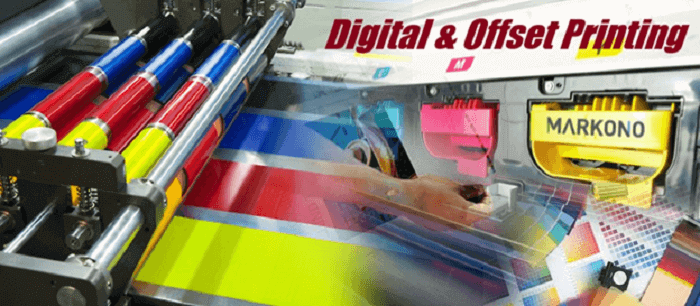
For many years the publishing industry has been facing a lot of challenges. The advancement of technology has shifted the reading habits from books to e-books. This has decreased the number of books that are being published. Publishers cannot make profits unless the quantities are reached. There are many other problems that have affected the publishing industry.
A Scenario of Excesses and Shortages
Publishers have been facing a very paradoxical situation of having excesses and shortages. This is because printing was done only using offset printers. Offset printers are better for large quantity printing. They are not good for printing smaller quantities due to the initial set up costs. Most offset printers don’t accept printing orders of small quantities.
When the printing was done on offset printing, the publishers were forced to print large quantities in one go because they cannot do additional editions if they are small quantities. To avoid losing any orders books were printed in excess quantities. This resulted in a lot of returns and wastage. It was found out that close to 30% of printed materials were returned and pulped when offset printing was done,
In another scenario, publishers were losing orders. When the first edition and subsequent large quantity runs are over, there can be no more printing possible using the offset printers. If all books are sold out, there was no way to execute subsequent orders which were for smaller quantities. The publishers lost the money that they could have made. This way the publishers were losing money due to wastage and lost orders.
The Advantages of Offset Printing
If offset printing cost so many losses to the publishers why are they still being used? Even today the large quantity printing is being done only using offset printers. There are a lot of advantages to using offset printers for printing books. The main advantage of using offset printers is that it is the most economical way of printing when the volumes are large. If you are printing around 2000 and above of the same page then it is very economical.
The offset printers work by transferring the ink from a plate to the rubber roller which then transfers the ink to the paper. Each color should have a separate metal plate. The plates are etched using computer created images and words as required. Though the set up of the printer initially takes a long time, the quality of the printing is very high. This is because the texture of the rubber pads and the paper are almost similar making the reproduction exactly as required.
Offset printing gives you much better quality for the images. The colors are closer to natural color. The printed matter is crisp, clear, accurate and clean. This method is good for large-scale printing of books, brochures, pamphlets, etc. You can also use the offset printers to print on different surfaces like cloth, leather, metal, etc. which makes it suitable for book printing if there is a need for leather or fabric jackets for the books.
The flow of ink can be controlled better in the offset printers than the direct printing style. The flow can be controlled using certain screws and keys. This will prevent wastage of ink and also give a better and consistent print quality. There is no wastage of paper due to ink running out or fading during printing.
What Are The Advantages Of Digital Printing?
Digital printing is the best method for short-run printing. Though they won’t give the same print quality when it comes to large volumes, speed of printing and their viability in even short runs make them perfect for small quantities. Digital printer doesn’t need to set up like an offset printer. Printing is done directly from the computer and even one page can be printed without loss.
Digital printing makes it possible to give quick delivery to customers. This means that repeat orders from customers can be supplied even when the quantity is small. Digital printing can be done as soon as the order is received. There is no need for any time-consuming setup.
Digital printing cannot give the same quality as offset printing. Moreover, as the quantity goes up digital printing becomes very expensive. The colors cannot be the same as in offset printing. But for small orders, digital printing is the best option due to speed and lower costs.
How Singapore Printers Use Technology to Solve Publishers’ Problems
Printers in Singapore are using a combination of digital and offset printing to take care of large orders and small orders. The first editions where the volumes are large are printed on the offset printer. This will help in reducing the cost for the publisher. The marketing copies which are small in number are printed using digital printers. The smaller quantity orders which are received later after the original editions are also printed by the digital printer. In this method, the publishers don’t lose any money by wastage or not printing small orders. This makes these printers the printing fulfillment center in Singapore.




